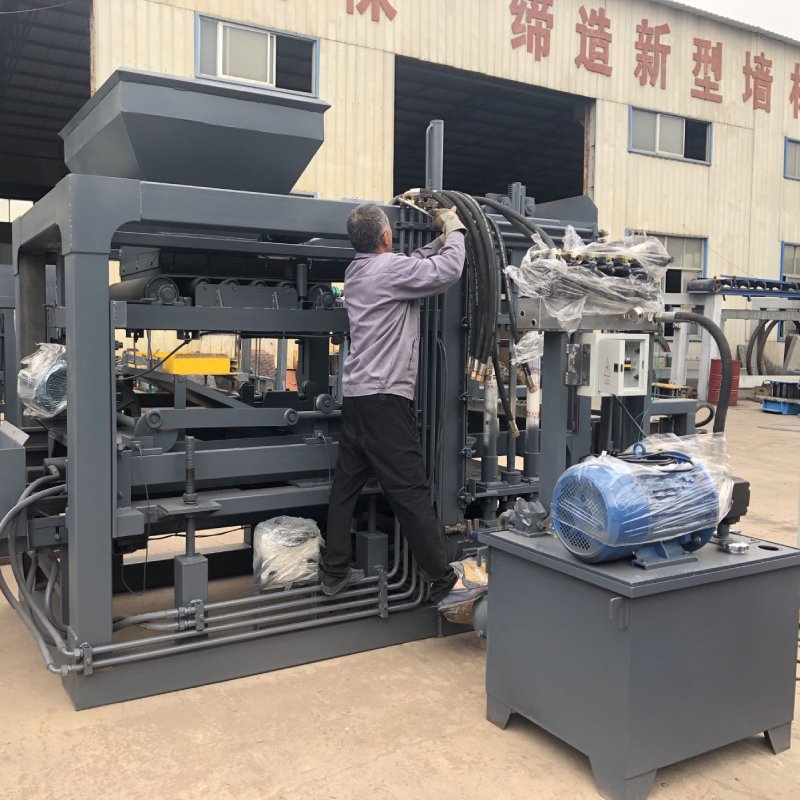
Image source :Aiweiblockmachine
Title: Unveiling the Future: Customization and Personalization Trends in Full-Automatic Block Design
Introduction
In the dynamic landscape of manufacturing, full-automatic block design is undergoing a transformative shift towards customization and personalization. As technology continues to advance, the integration of intelligent automation and design flexibility is redefining the possibilities in full-automatic block manufacturing. This article explores the emerging trends in customization and personalization, showcasing how full-automatic block design is evolving to meet the diverse needs of modern construction projects.
1. **Parametric Design for Versatility**
Parametric design is at the forefront of the customization trend in full-automatic block design. This approach involves defining parameters and constraints that guide the design process, allowing for the creation of a wide range of variations based on a set of predefined rules. Full-automatic block design software utilizing parametric principles enables architects and designers to easily customize block dimensions, shapes, and textures, ensuring versatility in meeting project-specific requirements.
The parametric design trend empowers manufacturers to produce customized blocks efficiently within a full-automatic production line, accommodating diverse architectural styles and construction needs.
2. **Interactive Design Platforms for Collaboration**
Collaboration between designers, architects, and manufacturers is facilitated by the rise of interactive design platforms. These platforms leverage cloud-based technologies and real-time collaboration tools, allowing stakeholders to contribute to the design process seamlessly. Design changes can be made collaboratively, with instant updates reflecting across the entire design ecosystem.
In the context of full-automatic block design, interactive platforms enhance communication between design teams and production units, fostering a collaborative environment that accelerates the customization process.
3. **Mass Customization through Digital Twins**
The concept of digital twins is gaining momentum in full-automatic block design. A digital twin is a virtual representation of a physical block, incorporating detailed specifications, material properties, and design parameters. This digital counterpart allows for the exploration of design variations, structural analyses, and simulations before physical production begins.
Digital twins pave the way for mass customization, where large quantities of unique blocks can be produced efficiently within a full-automatic production line. Manufacturers can leverage digital twins to optimize designs for specific applications, ensuring that each block meets the desired performance criteria.
4. **AI-Driven Design Optimization**
Artificial Intelligence (AI) is making significant inroads into full-automatic block design by offering advanced design optimization capabilities. AI algorithms can analyze vast datasets, including historical design and performance data, to identify patterns and correlations. This data-driven approach enables AI to suggest design modifications that enhance performance, durability, and energy efficiency.
Incorporating AI-driven design optimization into full-automatic block manufacturing ensures that each customized block is not only aesthetically unique but also optimized for structural integrity and sustainability.
5. **Sustainable Customization for Green Construction**
Sustainability is a key driver in modern construction, and full-automatic block design is aligning with green building practices. Manufacturers are exploring sustainable customization options by incorporating eco-friendly materials, modular designs, and energy-efficient features into block designs.
The trend towards sustainable customization not only addresses environmental concerns but also caters to a growing market demand for eco-conscious construction solutions. Full-automatic block design plays a pivotal role in realizing sustainable and personalized building solutions.
6. **Blockchain for Design Traceability**
Blockchain technology is emerging as a tool for ensuring traceability and authenticity in full-automatic block design. By recording design specifications, material details, and production history on a blockchain, stakeholders can verify the origin and authenticity of each block. This transparency fosters trust among architects, builders, and end-users regarding the quality and compliance of customized blocks.
The use of blockchain in full-automatic block design adds an extra layer of accountability, ensuring that the final product aligns with the initially specified customization requirements.
Conclusion
The trends in customization and personalization in full-automatic block design represent a shift towards more adaptable, sustainable, and collaborative manufacturing processes. As technology continues to advance, manufacturers are empowered to create customized blocks that not only meet the specific needs of construction projects but also adhere to the principles of sustainability and efficiency. The fusion of intelligent automation, parametric design, AI-driven optimization, and blockchain traceability is reshaping the landscape of full-automatic block manufacturing, paving the way for a future where every block is a unique and purposeful component in the construction of modern structures.
